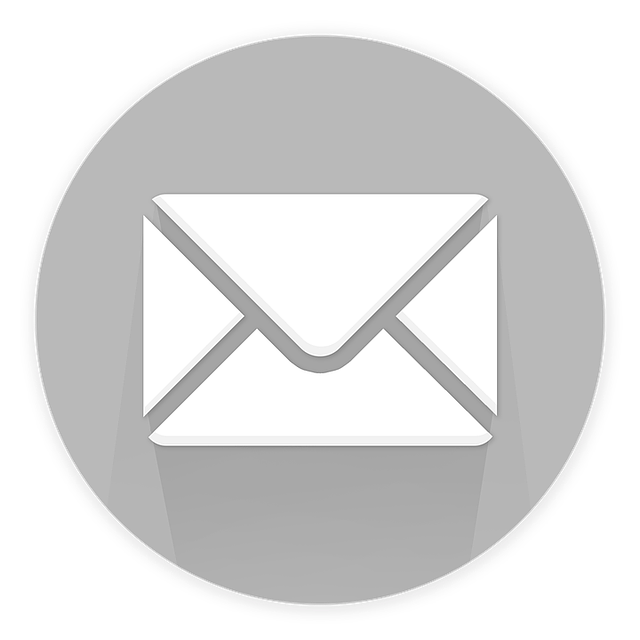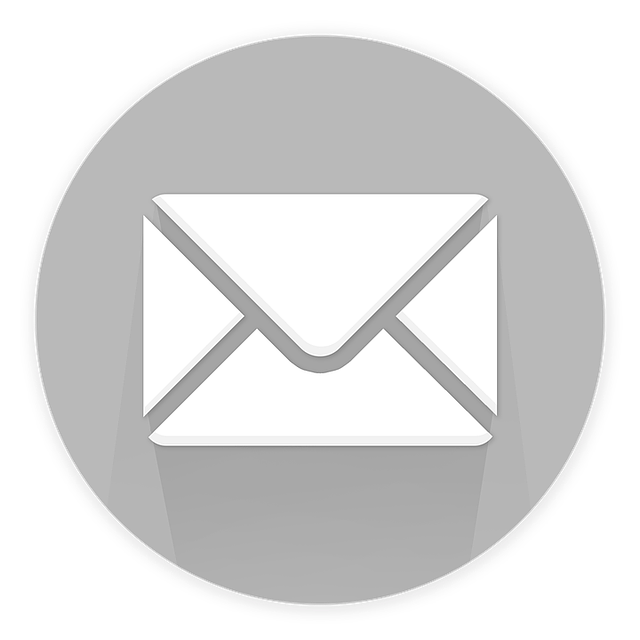Imagine you’re standing in front of a bustling marketplace, surrounded by countless vendors vying for your attention. As you navigate through the crowd, you notice one particular vendor who seems to have a secret weapon – a team of dedicated assistants who anticipate your every need and offer personalized recommendations. This vendor stands out from the rest, capturing your attention and earning your trust.
In the world of e-commerce, email marketing automation is that secret weapon. It allows you to connect with your customers on a personal level, delivering tailored messages at the right time to nurture relationships and drive sales. With the right strategies and tools in place, you can automate your email campaigns, saving time and effort while maximizing results.
In this comprehensive guide, we will explore the power of email marketing automation for e-commerce businesses. We’ll show you how to set up your automation system, design effective email campaigns, optimize your strategy, and integrate automation with other tools. Get ready to take your e-commerce business to new heights with the art of email marketing automation.
Key Takeaways
- Email marketing automation can benefit e-commerce businesses by connecting with customers on a personal level, increasing sales, saving time and effort, ensuring consistency in messaging, building customer loyalty, and achieving higher open and click-through rates.
- Key features to look for in email marketing automation tools include email templates, segmentation options, and personalization options.
- Email automation allows businesses to send emails based on specific actions or events, capture audience attention, increase open rates and engagement, enhance email content effectiveness, and create a tailored and captivating experience.
- A/B testing and analyzing email metrics are important to identify what resonates best with the audience, optimize email marketing strategy, improve conversion rates, and make data-driven decisions for future campaigns.
Understanding Email Marketing Automation
Email marketing automation is a game-changer for e-commerce businesses. It allows you to connect with your customers on a personal level and effortlessly increase sales. In today’s fast-paced digital world, it’s crucial to stay on top of email marketing trends. And one trend that has been gaining momentum is email automation.
By automating your email campaigns, you can send personalized, targeted messages to your subscribers at the right time. This results in higher open rates and click-through rates. The benefits of email automation are plenty. It saves you time and effort by automating repetitive tasks. It also ensures consistency in your messaging and allows you to nurture leads and build customer loyalty.
With email marketing automation, you can take your e-commerce business to new heights. Now, let’s dive into setting up your email marketing automation system seamlessly.
Setting Up Your Email Marketing Automation System
Once you’ve established your system, it’s crucial to configure the automation process for your e-commerce platform. Setting up email marketing automation for e-commerce is a game-changer. It saves you time, increases efficiency, and boosts your sales.
With the right email marketing automation tools for beginners, you can easily streamline your marketing campaigns and engage with your customers on a whole new level. Look for tools that offer features like email templates, segmentation, and personalization options. These tools will help you create targeted and personalized emails that resonate with your audience.
By automating the process, you can set triggers and workflows to send emails based on specific actions or events, such as abandoned carts or new purchases. This way, you can deliver the right message at the right time, maximizing your chances of conversion.
Now that you have your automation system in place, let’s dive into designing effective automated email campaigns.
Designing Effective Automated Email Campaigns
Are you ready to take your email marketing campaigns to the next level?
In this discussion, we’ll explore three key points that’ll help you craft compelling email subject lines, create engaging email content, and incorporate personalization and dynamic content.
By implementing these strategies, you’ll capture your audience’s attention, keep them interested, and make your emails feel personalized and relevant.
Get ready to see your open rates and conversions soar!
Crafting Compelling Email Subject Lines
Unlock the secret to captivating your audience with subject lines that act as a golden key, opening the door to increased open rates and engagement. Writing effective email copy is essential, but without a compelling subject line, your masterpiece may go unnoticed.
To grab attention, keep your subject lines concise, intriguing, and personalized. Use action words that create a sense of urgency or curiosity, prompting recipients to click and explore further. Experiment with emojis, but use them sparingly to maintain professionalism.
Personalization is key, so consider using the recipient’s name or referencing their previous purchase. Don’t be afraid to get creative and think outside the box. Craft subject lines that make your recipients feel special and excited to open your emails.
Once you’ve mastered the art of creating captivating subject lines, it’s time to focus on creating engaging email content that keeps your audience hooked.
Creating Engaging Email Content
Crafting compelling email subject lines is just the beginning; now it’s time to dive into creating engaging content that captivates your audience.
To truly grab their attention, consider incorporating interactive elements into your emails. Whether it’s a clickable product carousel or a quiz that provides personalized recommendations, interactive elements make your emails more engaging and memorable.
In addition to interactive elements, segmentation strategies can greatly enhance the effectiveness of your email content. By segmenting your audience based on their preferences, browsing behavior, or purchase history, you can tailor your content to meet their specific needs and interests. This personalization creates a sense of relevancy and increases the chances of conversion.
Remember, the key to creating engaging email content is to be creative, persuasive, and strategic. Think outside the box and experiment with different formats, visuals, and storytelling techniques.
By incorporating personalization and dynamic content, your emails will become even more powerful in driving customer engagement and loyalty.
Incorporating Personalization and Dynamic Content
By infusing personalized recommendations and dynamic content into your emails, you can create a truly tailored and captivating experience for each individual subscriber. It’s like a perfectly curated playlist that speaks directly to their unique tastes and preferences.
Personalization techniques allow you to go beyond just addressing your subscribers by their names. You can leverage their previous purchase history, browsing behavior, and demographic information to recommend products or content that align with their interests.
Dynamic content strategies enable you to deliver real-time, relevant information that changes based on the recipient’s actions or preferences.
By incorporating personalized recommendations and dynamic content, you can increase engagement, click-through rates, and ultimately drive more conversions.
Now that you’ve mastered the art of crafting engaging email content, it’s time to optimize your email marketing automation strategy for maximum impact.
Optimizing Your Email Marketing Automation Strategy
If you want to improve the results of your email marketing automation strategy, you need to start A/B testing your emails. By testing different variations and analyzing the results, you can identify what resonates the most with your audience and optimize your campaigns accordingly.
Additionally, analyzing email metrics and key performance indicators will provide you with valuable insights into the effectiveness of your campaigns and help you make data-driven decisions to improve future campaigns.
Don’t leave the success of your email marketing automation strategy to chance – use A/B testing and data analysis to drive better results.
A/B Testing Your Emails for Better Results
Implementing A/B testing in your email marketing strategy allows you to analyze and optimize different elements of your emails, leading to improved results and higher conversion rates. Here are four ways A/B testing can help you achieve better outcomes:
-
Email Segmentation: Divide your subscribers into different groups based on demographics, preferences, or purchasing behavior. Test different email content and design for each segment to determine what resonates best with your audience.
-
Subject Line Testing: Experiment with different subject lines to see which ones generate higher open rates. Use compelling language, personalization, and curiosity-inducing phrases to capture your recipients’ attention.
-
Call-to-Action (CTA) Testing: Test different CTAs, such as button color, placement, and text, to identify the most effective way to drive clicks and conversions. Small changes can make a big impact on your email’s performance.
-
Email Deliverability Improvement: Test different sender names, email addresses, and email service providers to optimize your email deliverability. Ensure your emails reach the intended recipients’ inboxes for maximum visibility and engagement.
By implementing A/B testing, you can gather valuable insights and make data-driven decisions to optimize your email marketing strategy.
Now, let’s dive into analyzing email metrics and key performance indicators to further enhance your results.
Analyzing Email Metrics and Key Performance Indicators
Let’s delve into the world of email analytics and KPIs to gain valuable insights into the performance of your email campaigns. By analyzing email metrics and key performance indicators, you can unlock the secrets to optimizing your e-commerce email marketing strategy.
Email segmentation strategies play a vital role in targeting the right audience with personalized content, resulting in higher engagement and conversion rates.
Additionally, keeping a close eye on email deliverability metrics ensures that your messages reach the intended recipients’ inboxes, maximizing the impact of your campaigns.
With these valuable insights, you can make data-driven decisions to improve the effectiveness of your email marketing efforts.
Next, we’ll explore how to leverage this information to enhance your campaigns and boost your e-commerce sales.
Making Data-Driven Decisions to Improve Campaigns
By harnessing the power of email analytics and KPIs, you can uncover valuable insights that will transform your campaigns into finely-tuned machines, propelling your business towards unprecedented success.
Data analysis techniques allow you to dive deep into the numbers, understanding the performance of your emails with precision. By examining open rates, click-through rates, conversion rates, and other metrics, you can identify patterns and trends that will inform your decision-making process.
Implementing segmentation strategies is another vital aspect of data-driven email marketing. By dividing your audience into smaller, more targeted groups based on demographics, behaviors, or preferences, you can deliver highly personalized and relevant content. This not only improves engagement but also increases the likelihood of conversions.
As you move forward, integrating email marketing automation with other tools will take your campaigns to the next level, amplifying your reach and impact.
Integrating Email Marketing Automation with Other Tools
Integrating email marketing automation with other tools enhances the efficiency and effectiveness of your e-commerce business, allowing you to maximize sales and deepen customer relationships. By leveraging customer segmentation for targeted email campaigns and maximizing ROI through email marketing automation, you can ensure that your messages reach the right audience at the right time, increasing the chances of conversion and customer loyalty.
To illustrate the power of integrating email marketing automation with other tools, consider the following table:
| Tool | Benefits |
|---|---|
| CRM | Sync customer data for personalized emails |
| Analytics platform | Track and analyze email campaign performance |
| E-commerce platform | Automate order confirmation and abandonment recovery emails |
| Social media | Promote email campaigns and drive traffic to your website |
| Customer support | Respond to customer inquiries and feedback via email |
By integrating these tools, you can create a seamless experience for your customers and streamline your email marketing efforts. This sets the stage for the subsequent section on best practices for successful email marketing automation, where we explore how to optimize your campaigns for even greater success.
Best Practices for Successful Email Marketing Automation
To make the most of your email marketing efforts, follow these best practices for successful automation.
Start by implementing effective email segmentation strategies. By dividing your email list into smaller, more targeted groups based on demographics, purchase history, or engagement level, you can deliver personalized content that resonates with each segment. This leads to higher open rates, click-through rates, and ultimately, more conversions.
In addition to segmentation, utilizing the right email automation tools is crucial. Look for platforms that offer features like triggered email campaigns, personalized product recommendations, and dynamic content. These tools allow you to automate your email marketing efforts while still providing a personalized experience for each recipient.
Remember to regularly analyze and optimize your email marketing automation strategy. Monitor key metrics like open rates, click-through rates, and conversion rates to identify areas for improvement. Continuously test different subject lines, email designs, and calls to action to find what resonates best with your audience.
By following these best practices and harnessing the power of email segmentation strategies and automation tools, you can create highly effective email marketing campaigns that drive results and boost your e-commerce business.
Frequently Asked Questions
How can I measure the success of my email marketing automation campaigns?
To measure the success of your email marketing automation campaigns, you need to analyze the ROI and open rates.
Let’s say you’re a fashion retailer who recently launched an automated email campaign promoting a new collection. By tracking the ROI, you can determine the campaign’s effectiveness in generating sales.
Additionally, analyzing open rates will give you insights into how engaging your emails are and whether they’re capturing the attention of your audience.
What are some common pitfalls to avoid when setting up an email marketing automation system?
When setting up an email marketing automation system, beware of common pitfalls that can hinder your success.
One common pitfall is failing to segment your audience properly, resulting in irrelevant and ineffective emails.
Another pitfall is over-automation, bombarding subscribers with too many emails and overwhelming them.
To avoid these pitfalls, follow best practices such as carefully segmenting your audience, personalizing your emails, and testing and optimizing your campaigns regularly.
By doing so, you can create a successful and engaging email marketing automation system.
Can I personalize automated emails for each individual subscriber?
Yes, you can absolutely personalize automated emails for each individual subscriber. Personalization benefits your email marketing by creating a more tailored and engaging experience for your subscribers.
To achieve this, you can use personalization strategies such as dynamic content, segmentation, and triggered emails. By incorporating these tactics, you can send targeted messages based on subscriber behavior, demographics, and preferences.
This level of personalization not only improves the effectiveness of your email campaigns but also strengthens your relationship with your subscribers.
How often should I send automated emails to my subscribers?
To maximize engagement and avoid overwhelming your subscribers, it’s crucial to find the right email frequency. Best practices suggest sending automated emails to your subscribers at a frequency that keeps them interested without bombarding their inbox.
To strike a balance, analyze your audience’s behavior and preferences. Consider factors like the nature of your business and the value of the information you’re sharing. Experiment, track results, and adapt accordingly to find the sweet spot that keeps your subscribers engaged and eager for more.
Are there any legal considerations or regulations to be aware of when using email marketing automation for e-commerce?
When using email marketing automation for e-commerce, it’s crucial to be aware of legal considerations and compliance regulations. Data protection is of utmost importance, and you must ensure that you have the necessary consent from your subscribers to send them marketing emails.
Familiarize yourself with regulations like the General Data Protection Regulation (GDPR) and the CAN-SPAM Act. By following these regulations, you not only protect your customers’ privacy but also build trust and credibility with your audience.
Conclusion
In conclusion, email marketing automation is a game-changer for e-commerce businesses. With the ability to streamline and personalize your customer communications, you can boost engagement, drive sales, and build lasting relationships.
So don’t delay, hop on the automation train and watch your business soar! Remember, Rome wasn’t built in a day, and neither is a successful e-commerce empire. But with the right email marketing automation strategy, you’ll be well on your way to conquering the digital landscape.
So seize the day and start automating today!







